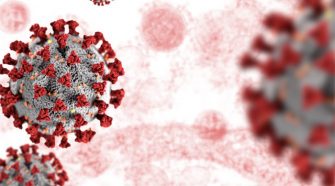Many people know that smoking tobacco increases your chances of developing lung cancer and respiratory illness. But the negative health effects of smoking aren’t restricted to your lungs.
A
One of the lesser-known side effects of smoking is an increased chance of developing hair loss. It’s not exactly clear why smoking is associated with hair loss, but it’s thought that there are many contributing factors.
Keep reading as we dig deeper into the many ways smoking may cause hair loss.
Smoking tobacco can potentially damage your hair follicles and increase your risk of developing hair loss.
A
The researchers found that 425 out of 500 smokers had some degree of hair loss while only 200 of 500 nonsmokers showed signs of hair loss.
On the Hamilton-Norwood scale of hair loss, grade 3 is identified by deep recession along the hairline. At grade 4, there’s balding at your vertex.
The researchers found that 47 percent of the smokers had grade 3 hair loss and 24 percent had grade 4. Only 10 percent of nonsmokers reached grades 3 or 4.
The researchers concluded that nicotine and related chemicals might be responsible for accelerating hair loss, but more research is needed to back this theory.
Smoking may also cause oxidative stress and reduced blood flow to your hair follicles that may contribute to hair loss.
Oxidative stress
Smoking increases your body’s production of free radicals. Free radicals are molecules that easily react to other molecules in your body and can potentially cause damage to the DNA of your cells.
Oxidative stress occurs when there’s an excessive amount of free radical activity in your body. Exposure to the following can all potentially cause oxidative stress:
- tobacco smoke
- pollution
- radiation
- ultraviolet rays
In an older 2003 study, researchers proposed that toxic chemicals in tobacco smoke may lead to damage in the DNA of cells in your hair follicles. Damage to the DNA of these cells may potentially lead to impaired hair growth.
A
Reduced blood flow to your hair follicles
Chemicals in tobacco can negatively impact your circulation and cardiovascular health. The
Blood vessels nourish your hair follicles and allow the
Other ways smoking may contribute to hair loss
Smoking may lead to other changes in your body that contribute to hair loss. Some factors that have been proposed include:
- promoting the release of pro-inflammatory cytokines, signaling proteins that promote inflammation
- scarring of your hair follicles due to increased levels of cytokines
- changing enzyme levels that control tissue remodeling in your hair growth cycle
- increasing hydroxylation of the hormone estradiol and inhibition of the enzyme aromatase that leads to a state of low estrogen levels
Along with contributing to hair loss, smoking may negatively impact your hair health in a number of other ways.
- Early onset of gray hair. A
2013 study found significant evidence that there’s a relationship between the onset of gray hair before turning 30 years old and smoking cigarettes. - Poor hair transplants. A
2018 research review showed that people who smoke are at a higher risk of developing complications during hair transplants such as the death of skin tissue on the scalp. - Potentially makes hair more brittle. Decreased blood flow to your hair follicles can potentially disrupt collagen production and lead to brittle hair.
- Potentially makes hair drier. Hair oil production tends to decrease when you’re 45 to 50 years old, according to a
2018 research review . Oxidative stress from smoking could potentially speed up the aging of your hair and lead to dryness at a younger age.
At this time, the health effects of vaping are still widely unknown. Vaping products are still relatively new on the market, and researchers are still trying to figure out all its effects on your body.
A 2018 report found significant evidence that vaping could cause oxidative stress and damage to DNA. In theory, oxidative stress and DNA damage could contribute to hair loss, although more research is needed to fully understand vaping’s effects on your hair.
When you quit smoking, it’s possible to undo some of the damage smoking has caused to your body. For example, if you go 15 years without smoking, your risk of having a heart attack or stroke is equal to somebody who never smoked.
It’s not clear if you can undo hair loss caused by smoking. Some people with thinning hair are able to achieve noticeable hair regrowth if it’s caused by a medical condition.
If you’re dealing with male-pattern or female-pattern hair loss, you’re unlikely to notice significant regrowth. You may find that applying Rogaine (minoxidil) helps you achieve a limited amount of regrowth.
Quitting smoking is difficult, but it can have a positive effect on many aspects of your health. A doctor can help you create a quitting plan that gives you the best chance of succeeding.
Here are some tips for quitting smoking that you may find helpful.
- Nicotine replacement theory. Some people find it helpful to use nicotine patches, gums, or inhalers to slowly wean down the amount of nicotine they consume. By reducing nicotine intake slowly, they decrease withdrawal symptoms.
- Prescription drugs. Chantix, Zyban, and other prescription drugs can help you ease cravings and withdrawal symptoms. You may be able to use these medications along with nicotine replacement theory.
- Alternative therapies. Some alternative therapies may help you break habits you developed around cigarette smoking. Some options include hypnosis, acupuncture, and medications
- Support therapies. You may find that therapies like counseling or support groups help make quitting easier.
- Avoid smoking environments. Staying away from areas where people are smoking may help you reduce temptation.
- Quitting apps. There are many apps available to help you quit smoking.
- Quit cold turkey. When you stop smoking cold turkey, you may experience more intense withdrawal symptoms than when you quit gradually. However, it may help you get past your nicotine habit quicker.
When you breathe in tobacco smoke, chemicals can travel from your lungs into your blood. Your blood carries these chemicals to other parts of your body where they can negatively impact many aspects of your health.
Smoking is thought to cause hair loss in a number of ways such as reducing blood flow to your scalp and causing damage to the DNA of your hair follicles. Quitting smoking may help you achieve a limited amount of hair regrowth and positively impact your health in many other ways.
















